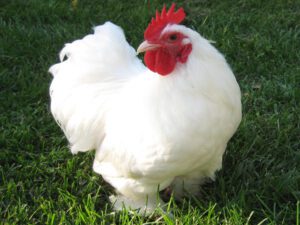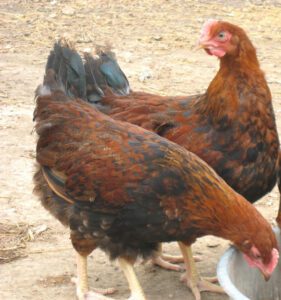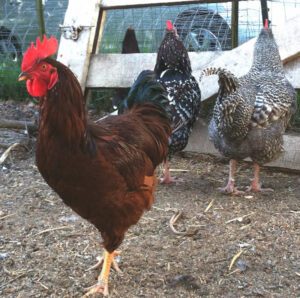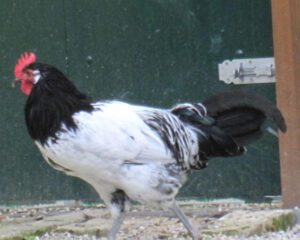You can easily identify sick chicken if you monitor your birds regularly. Different types of diseases or sickness is actually highly common with chickens.
And sickness will occur more often if you don’t have the proper understanding on how to maintain a chicken’s health or surroundings.
But if you raise your birds in a clean environment and inspect their health regularly, then you will be able to keep your flock disease free.
Although sometimes, it can be different and your chickens can get ill over unknown reasons (even if you try your best for keeping your birds in best environment and care).
How to Identify Sick Chicken
Chickens can’t talk about their problems or diseases to you 🙁 So, you have to take good care of them and look for the symptoms of sickness.
And you need to act fast when you notice your chicken acting strange. Here we are describing more about how to identify sick chicken.
Monitor Your Birds Regularly
You should monitor your chicken’s health on a regular basis and identify sick chicken for keeping them disease free.
You should inspect your flock daily, or at least once a week.
Symptoms of sickness are easier to notice if you perform a routinely check-up and inspection on each bird. Regular check-up consists of examining the comb, claws, feathers, legs and wattle.
Inspect Behavior
Watch your chicken’s behavior, and an unusual behavior could be a symptom that your chicken is sick.
Sluggish chickens are most likely to be ill. They don’t move around and just sit in the corner.
If any chicken in your flock is itching itself, then it could be the sign of lice/mites.
If any chicken is bundled up, then it is a sign of illness (especially if the rest of the birds are normal). But this type of behavior is normal if it is too cold outside.
Look Into the Eyes
Look into the eyes of your chickens. Healthy chickens generally have aware, bright and clear eyes.
Sleepy or cloudy eyes could be a sign of illness (this is known as conjunctivitis).
Check the Vent
Healthy chickens generally have well-placed and regular looking vent. But it could be a sign of prolapsed vent or your chicken could be egg bound if your chicken has a protruding vent.
Examine the Excrement
You should also examine the excrement of your chickens on a regular basis. Examining the excrement regularly also help to identify sick chicken.
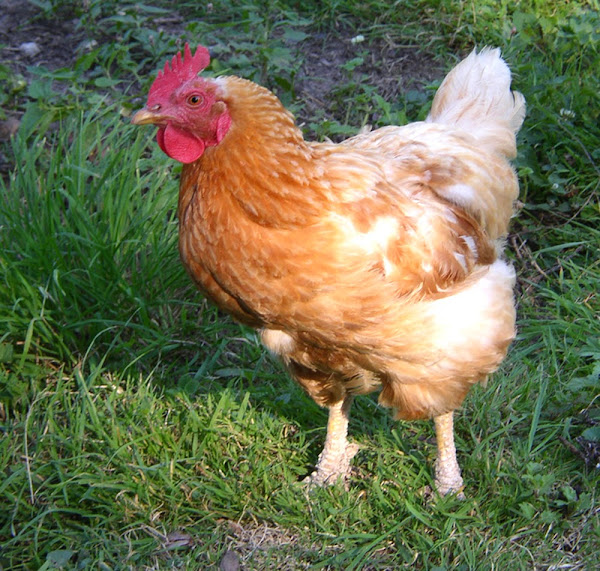
Your chicken could be seriously ill if it has blood in it’s excrement. This is a common sign of coccidia which is a contagious disease and can be deadly in young chicks.
Inspect the Comb and Wattle
Inspect the comb and wattle of your chickens regularly. Healthy chickens generally have bright red comb and wattle. But if you notice any change in color (such as pale), then it could be a symptom of sickness.
If you get snow in your country, then a pale comb or wattle can indicate frost bite.
Also you can see a cream colored wattle or comb in the young pullets, because younger ones don’t develop bright combs or wattles until they are fully matured.
Look Through the Feathers
Feathers of the chicken is an excellent area for external parasites. So, you should regularly look for lice or mites on the skin and feathers of your birds.
These bugs are generally very small but they can cause your bird to become very weak and agitated.
In case of mite attack you will notice white, flaky build up at the shaft of the feathers (these are easier to spot and called mite eggs).
Look at the Legs
You can also identify sick chicken by looking at it’s legs. Healthy chickens generally have clear and well-shaped legs.
Raised scales can indicate scaly-leg mites. If any of your bird has a black scab on the bottom of it’s foot, this is known as bumble foot.
Body Shape
Look at the body shape of your chickens. Your chicken is probably sick if you notice your chicken’s wings and tail are stopped down.
Generally healthy chickens have perked up steady body. A puffed up chicken could also be a symptom (although chickens generally do this in the cold weather).
Monitor the Crop and Breathing
The crop of the chicken is located below the beak, in the middle of it’s front body. Examine the crop and breathing of your chickens.
Your chickens are either ill or have something stuck in their crop if your bird is sneezing or wheezing.
Crop of the healthy chickens generally should not be engorged, hard or squishy. Generally a full crop is normal, because it’s the way of digesting food.
You can easily identify sick chicken if you notice any of these symptoms. If you notice any of these symptoms or changes in behavior, then you should act as fast as possible. Chickens generally show sickly symptoms in the last stages. However, all of the above problems can be treated as long as you get your chicken help as soon as possible. God bless you!


